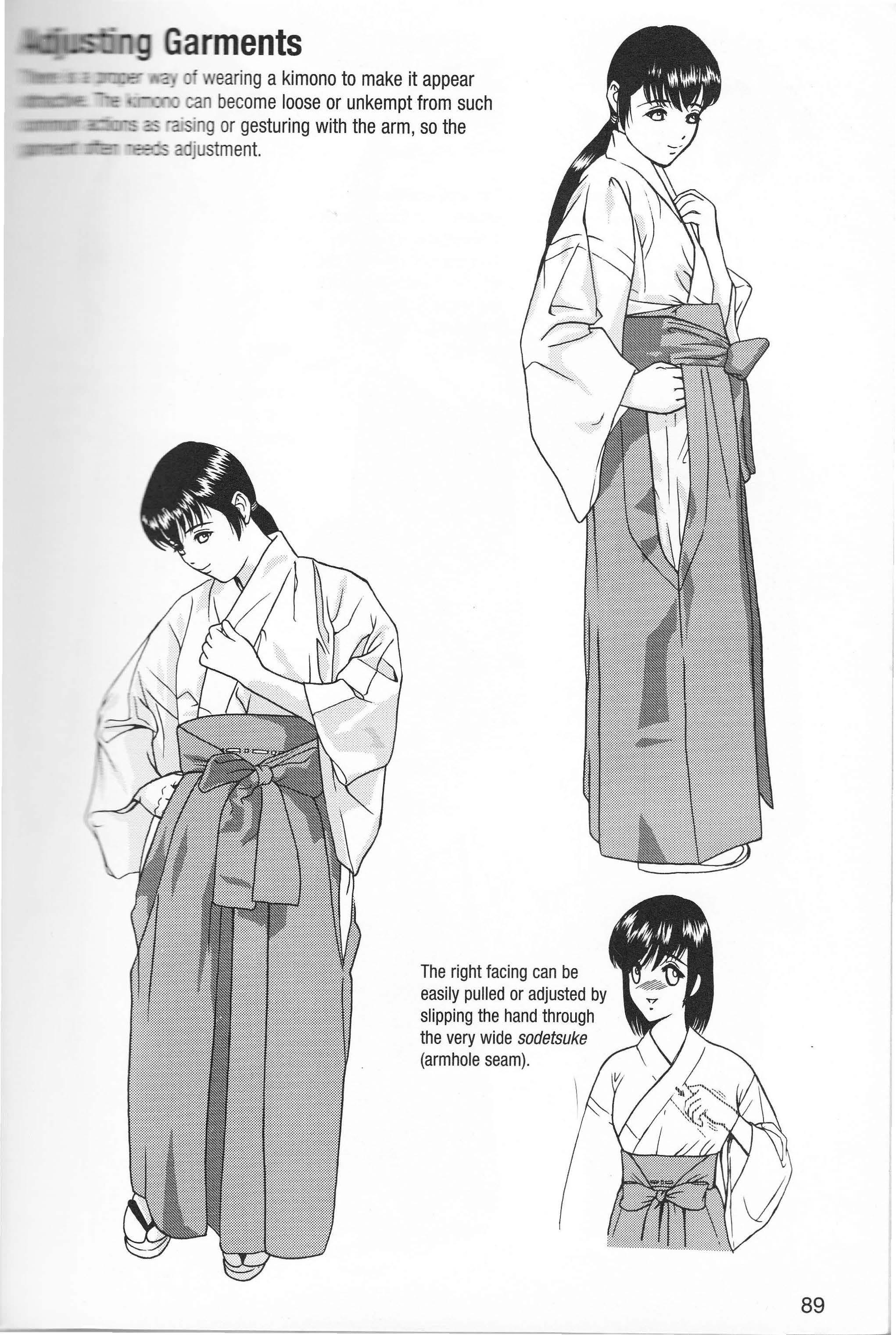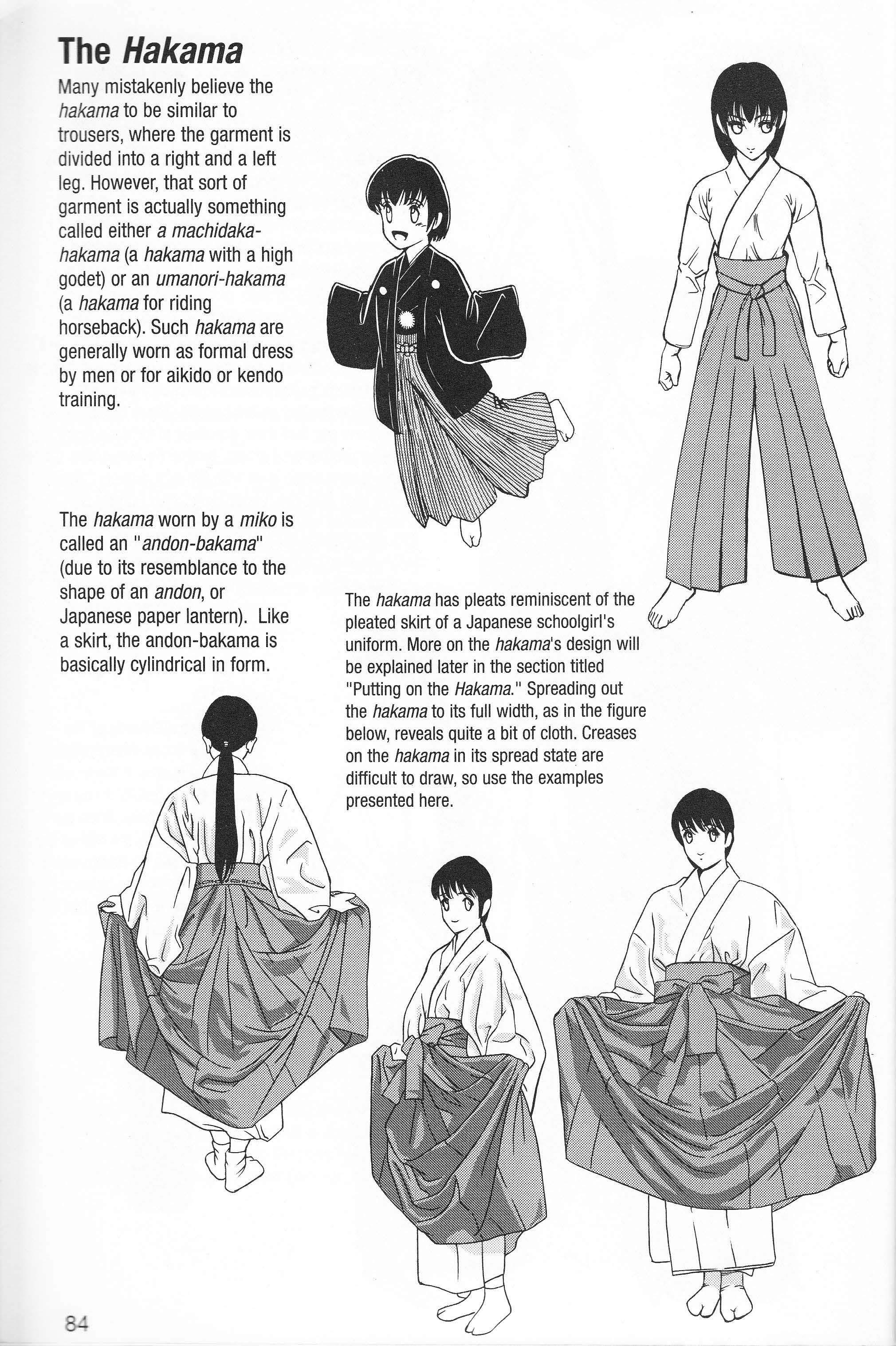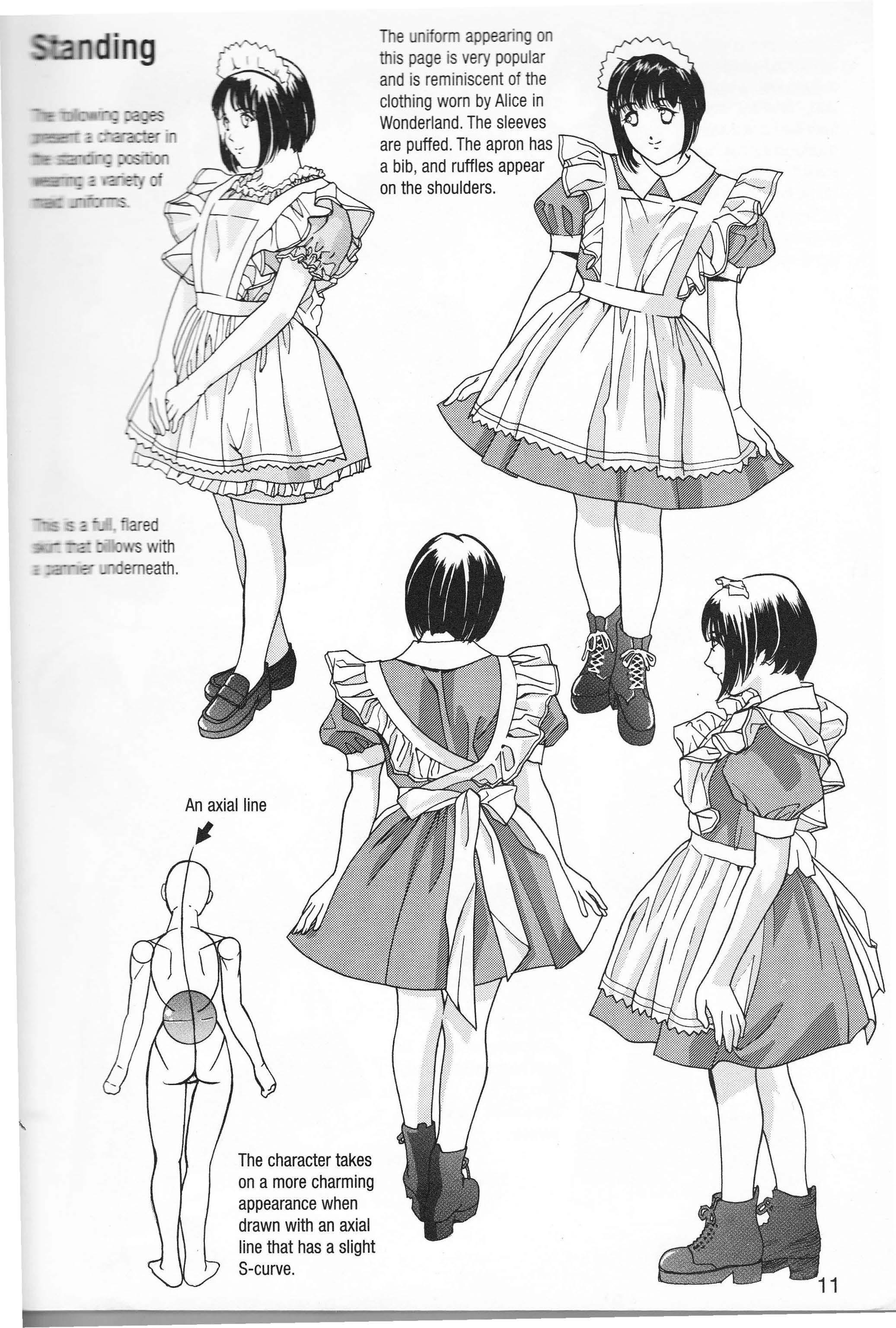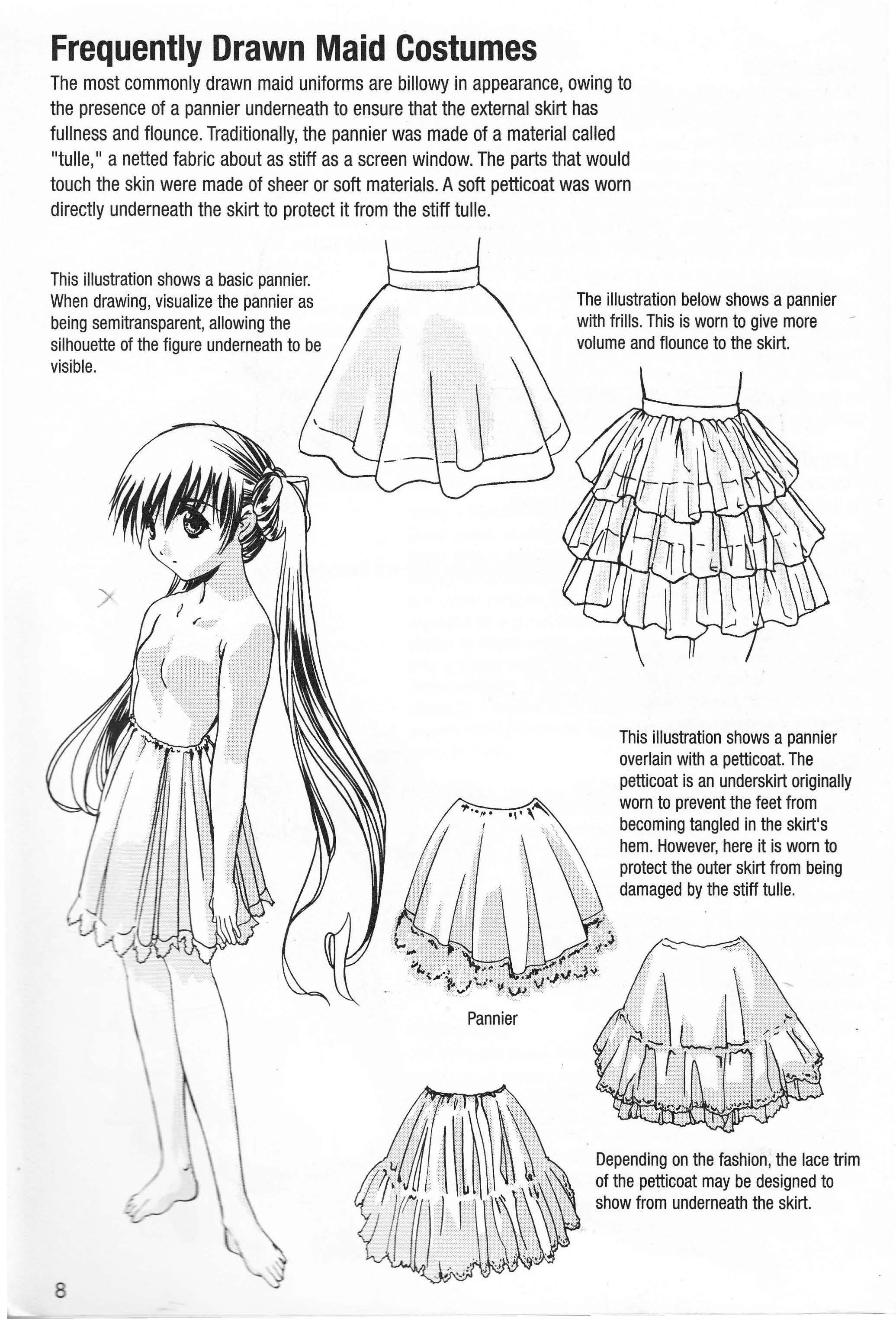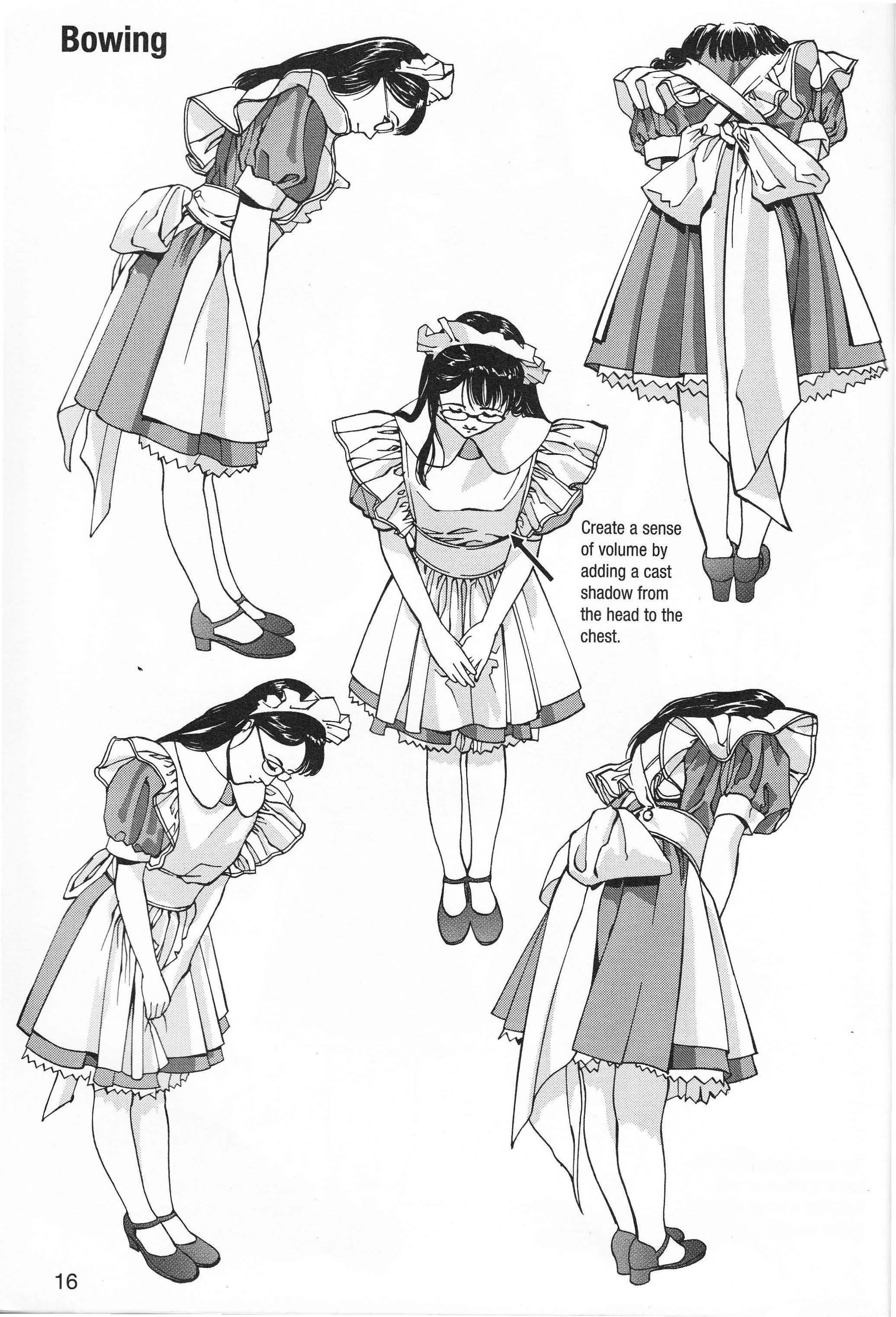Dressing in Miko Attire The Undergarments
The susoyake covers the lower half of the body and serves to prevent the feet from becoming entangled in the long skirt of the Japanese robe, which extends all the way to the ankles. This undergarment corresponds to the Western slip or underskirt. The hadajuban is made of a fabric similar to thick gauze or bleached cotton cloth. It is so lightNeight that the miko's figure is visible from underneath.
First, the miko puts on the susoyoke (an underskirt), and over that dons a hadajuban (a short, wrapped undergarment). Nowadays, a brassiere and panties are frequently worn under the susoyake and hadajuban, but the lattertNo constitute the traditional undergarments worn by the miko.
The susoyake is white and ends above the ankles, leaving the feet exposed.
The hadajuban is short in length, ending approximately at the hips.
Hakui (white robe) The miko wears a white robe called a hakui over the undergarments. Sodetsuke (armhole seam)
Sleeve Height
Bottom of the sleeve
End of the Eri (robe collar/facing)
'
Seam of the Okumi (panel under the collar)
Senui (back
seam) /
As is apparent from the illustrations above, a kimono has an okumi seam and a senui seam on the front and back, indicating its center. When the kimono is worn, these seams should fall over the axial line of the body; however, the front okumi seam will fall at an angle leaning toward the end of the robe facing. Only a small part of the okumi seam is actually visible. Please see the following pages for reference.








